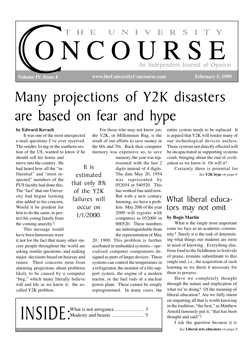Modesty and beauty - the lost connection
by Regina Schmiedicke
In his book Man and Women, Dietrich von Hildebrand points to a particular “perfection” of the feminine nature: “We find in women a unity of personality by the fact that heart, intellect, and temperament are much more interwoven…This unity of the female type of human person displays itself also in a greater unity of inner and exterior life, in a unity of style embracing the soul itself as well as the exterior demeanor.”1 In other words, women possess a special genius for harmonizing their outward appearance with their interior life-for incarnating their beliefs and ideas in concrete, visible ways.
Sadly, just as many women have forgotten what it means to be feminine, we have also forgotten how to attain this unity. In short, while many of us Catholic women believe strongly in chastity and purity, our dress does not always reflect our convictions. In order to correct this situation, we need to recover a sense of the reason why women in the past dressed modestly, and how modest dressing “befits” the dignity and vocation of women.
In our fragmented society, scanty clothing has somehow become associated with women’s social progress-as if the “right” to wear less indicated that we are moving up in the world. But my casual overview of history leads me to almost the opposite conclusion. It seems to me that in most cultures, the more clothing a person wears, the more important that person tends to be in society.
In history, slaves were often forced to go naked; royalty and other important personages were draped in robes. Peasant girls, slaves and concubines often wore short dresses (mini-skirts?), sometimes to show that they were sexually available. Women of rank were outfitted with long garments -queens of ancient Egypt, medieval France, and Victorian England all wore gowns that fell to their feet. My knowledge of anthropology is admittedly limited, but I believe this was the case in almost every culture until the advent of more effective and available birth control, when the situation changed to what we have now. Even in the debased symbolism of our modern culture we can find remnants of the association between clothing and human dignity. Judges still wear robes, as do priests, bishops and popes. On ceremonial occasions, professors and graduates wear them as well. In our society, only women are culturally permitted to wear “robes” at any time if they wish. I began exercising my “cultural prerogative” to wear robes (long skirts) as often as possible when I realized how crucial and valuable a woman’s role is to society. We’re meant to be much more than sex objects.
Dressing immodestly is insensitive to men. In today’s gender wars, Catholics can work for change by cultivating good relationships between men and women, of friendships built on trust and mutual respect. I’ve had the pleasure of meeting many fine Catholic young men who bend over backwards to understand and accommodate a woman’s sensitivities and special genius. However, in the area of modesty, most young Catholic women haven’t responded in kind. I myself am puzzled as to whether this is sheer ignorance or merely an uncaring attitude.
Once a chastity educator I know, who wore very short skirts, said to me: “If men have a problem with my clothes, well, they just have to deal with it.” This attitude tramples on men’s visual sensitivity. What men see affects how they feel in a far more direct way than it does with women.
A parallel is a woman’s emotional vulnerability. FUS women are familiar with the “sweet guy” who is perpetually discerning the priesthood or avoiding all commitments. This kind of man makes himself attractive to girls by the attention he gives them. He flirts with them and spends lots of time with them, tantalizing them with the idea that he is romantically interested. One of the most trying problems with “Mr. Discerning the Priesthood” is that his offense is so innocent and so subtle that most girls won’t ever try to set him straight. This is very similar to the difficulty men encounter when women dress immodestly. It may bother them, but they would really rather not say so to the girl in question.
Having talked to a generous handful of Catholic men on the subject, my guess is that most pure men living in this culture have visually numbed themselves to the immodest dress of most women, including the Christian women they know. If a woman is dressed in a short skirt or a tight fitting top, they tune her out visually - they don’t look at her unless they must, and they avoid being close to her.
This “tuning out” allows would-be chaste men to avoid the sin of lust despite the abundance of opportunities around them. But in the same way that getting hurt has made many women less emotionally vulnerable, I would guess that this visual numbing of male sensitivities won’t help the growth in charity between men and women in the Church.
At a time when some men are learning to respect women as their equals, too many women are debasing themselves in men’s eyes by the way they dress. Women will complain about the lack of knights in shining armor, but it hasn’t occurred to many of them that they are scarcely dressing like the chaste ladies of the days of chivalry.
In talks on modesty, I’ve frequently heard the comment that a Catholic woman shouldn’t wear anything that the Virgin Mary herself wouldn’t wear. While I agree with this, I’ll observe that I’ve never seen a memorable image of the Virgin Mary wearing a dowdy, shapeless dress. On the contrary, her dresses are usually softly draped, flattering to her feminine figure. She is rarely depicted in drab colors-strong, clear colors abound in her dresses, sometimes with embellishment. In a word, the Blessed Mother is portrayed as beautifully dressed. Here I feel is the key to the modesty problem.
Some unfortunate Jansenist or Puritanical impulse in the modern Catholic imagination has equated modesty with hiding the womanly figure. Apparently too many Catholic women think being modest means wearing, unattractive clothing. Could this be why even women undergoing profound spiritual conversions quietly bypass the idea of adopting modest dress? I’ve seen my Catholic women friends approaching their beloved Savior in the Eucharist-or, sadly-entering into the Sacrament of Marriage-with scarcely any notion of how their exterior appearance is at odds with their interior beliefs. I’ve detected a fearfulness in them about looking like a prude or “not looking nice”-as though modesty and loveliness are inherently opposed to each other! Clearly, our cultural imagination needs an overhaul.
For one thing, I think we are profoundly, tragically ignorant of the great allure and splendor of modesty. Men have told me that a girl in a becoming, modest dress was “a breath of fresh air,” “just delightful to be with.” With their visual sensitivity, men are free to look at a chastely-dressed girl and just enjoy looking at her, without a trace of sexual temptation. Modesty tied to beauty brings with it a liberation between men and women we can hardly begin to imagine.
Our society desperately needs women to recover a sense of the fittingness of modesty to our dignity and vocation. It depresses me to see how many strong, thoughtful and devout young Catholic women, including some who are on the front lines defending the faith, seem to have no notion of the nobility of their own bodies, and are content to be possible temptations rather than “breaths of fresh air” in society. From what I’ve seen, the culture of dress even among the orthodox Catholic elite has been affected more by Vogue than the Vatican. At many Catholic social gatherings and Steubenville weddings, little black dresses and bared shoulders abound-as if modest dress were only for orthodox orders of nuns. The charism of the laity for changing the culture is not in evidence.
Having mentioned the Vatican, I will throw out a concrete solution as a starting point. If they want to see the inside of many churches in Italy, women must cover their shoulders and their legs down to below the knee. Some might be familiar with the “Pope’s Rules.” In the 1940’s, Pius XII was asked his opinion of what women teaching in Italian schools should wear to preserve their modesty. With the delicate reserve of any average man asked for his opinion on women’s clothing, he simply indicated, “Below the knee, halfway down the arm, and two finger widths below the collarbone.” I find these guidelines most reasonable.
And far from being restrictive, such rules actually liberate women. As Chanel Coco, the French designer once said, freedom of a woman involves freedom to move. In a dress that incorporates the Pope’s Rules, a woman can cross her legs, stretch, bend down to pick up a pencil, or curl up with her legs beneath her without fussing with her hemline. She can squat down to talk to a small child, sit Indian-style, or lie down on the floor to watch a movie without worrying about undue exposure. In a skirt that is long enough and full enough, a woman can climb trees, ride horseback, even be flipped over a man’s back while swing dancing-without being immodest. One would think that more girls would opt for more modest dress for sheer reasons of comfort, but another heresy in our debased culture has equivocated formal dress in a woman with discomfort-i.e., high heeled shoes.
I believe that women are powerful. I believe that the way they dress and carry themselves as the crown of creation has great potential to proclaim the truth. Without any activism, by the woman’s genius of merely “being,” a Catholic woman can be a powerful evangelist of the Gospel of Life without speaking a word, by the way she dresses, moves and carries herself. It is time for lay Catholic women to exercise their creativity and ingenuity towards creating a standard of dress that enhances their vocation instead of detracting from it. I pray that the words “a sanctuary of the Holy Spirit” won’t remain a vague catechism answer disassociated from concrete reality. My dream is that someday whenever someone sees a Catholic woman, they see a striking reminder, a modern incarnation, and a living icon of that first-century Jewish maiden who was told one day by an angel that she would be the Bride of the Holy Spirit.
Mrs. Regina Doman Schmiedicke, who graduated from FUS in 1992, writes from Front Royal, Virginia. She is the author of several fairy tale novels for teenagers, and one children’s book.
- reprinted 1992 by Sophia Institute Press, p. 36. ↑


